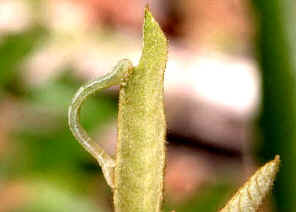Looper Moths - Family Geometridae
This page contains pictures and information about Moths and Caterpillars in family Geometridae that we found in the Brisbane area, Queensland, Australia.

Most of the Caterpillars in family GEOMETRIDAE only have one or two pair of prolegs. The caterpillars move with curving their bodies into loops. This is why they commonly called Loopers. They are also known as Inch Worms because they apparently measuring off one inch at a time as they move. Some of them are called Twig Caterpillars because their resting posture look like a twig.
The
GEOMETRIDAE caterpillars
are usually hairless and with slender body. They are well
camouflaged in green or brown in colour. Most of them feed on leaf and active
during the day.
Most of them are easy to rear. The GEOMETRIDAE usually
pupate in plant materials or in the soil in a flimsy cocoon.
Their adults are medium to large size. Most of the
adult moths have camouflaged wing patterns. These patterns are usually wavy
lines extend across both fore and hind wings. These moths rest with a standard
posture, holding wings outspread and tightly pressed against the surface
on which they are sitting. This eliminates the shadow as well as the wings
outline for a better camouflaged posture. Most GEOMETRIDAE moths are active at
night.
GEOMETRIDAE is a large family. We found many of them in Brisbane and listed as follow.
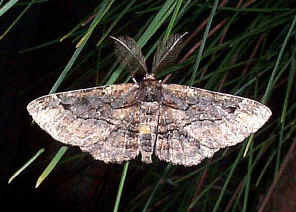 Subfamily
ENNOMINAE
Subfamily
ENNOMINAE
- ENNOMINAE - Most Caterpillars in this subfamily are resemblance to dead twigs or other parts of their food plants. The adult moths are active at night.
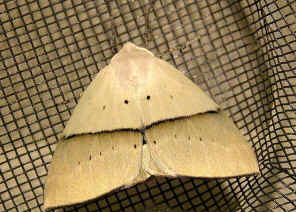 Subfamily
OENOCHROMINAE
Subfamily
OENOCHROMINAE
- OENOCHROMINAE - For the adults in this subfamily, there are the stout-bodied group and the slender-bodied group.
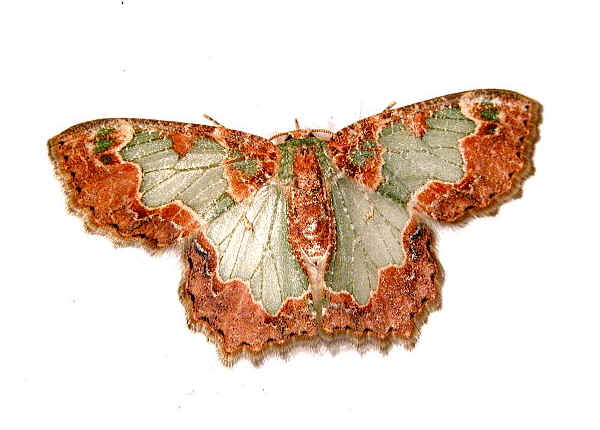 Subfamily
GEOMETRINAE
Subfamily
GEOMETRINAE
- GEOMETRINAE - The mature caterpillars in this subfamily only have one pair of ventral prolegs. They can move only in the looper fashion. Adults fly weakly at night. Some are green in colour hence the common name Emeralds.
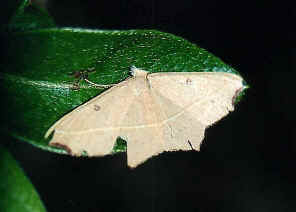 Subfamily
STERRHINAE
Subfamily
STERRHINAE
- STERRHINAE - Moths in this subfamily are medium to small in size. They usually pink or yellow in colour.
Questions for Discussion
How the caterpillars run away from their predators? Why we sometimes see a Looper Caterpillar hanging from a silk in mid-air?
Most caterpillars move slowly. If they have to run away from their predators, the most effective way is to drop onto the ground. However, most caterpillars, beside just dropping, they evolved different ways to enhance their way of escape.
- Looper Caterpillar that Bungee-Jumps
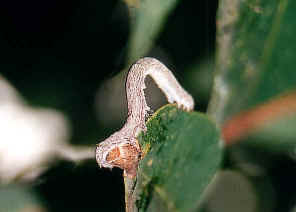

- We find that for the Looper caterpillars that live on trees, they use a very smart way to escape from predators. Like the Looper in above photos, when disturbed, it drop to the ground and disappear form predator's eye-sight. When we check carefully, instead of just doing a simple jump, the Looper made a Bungee Jump. It jumped with a safety line, the silk, attached to its body. After jumping, it was hanging in the mid-air. After a minute or so, it climbed via the silk back to the same place easily.
- There is a lot of advantages on this Bungee-Jump. If the caterpillar just drop to the ground, the ground is sure not a safe place for the caterpillar. Also it is very hard for the caterpillar to climb back up to the tree. The worst is, if it drop to the ground, the predator may follow and find it.
- Next time when you see a Looper, try to induce a Bungee Jump. This is fun to watch.
- Caterpillar that drops and curves


- For some other caterpillars, such as the one in the above pictures, they are not living on a tree. They live on grass. The Bungee Jump escape methods may not be practical. Instead, this caterpillar drop to the ground and curve its body into a round shape.
- The curved caterpillar looked completely different so the predator may not recognize it on the ground. Later when the danger has gone, it is not too difficult for the caterpillar to climb back onto the grass.
